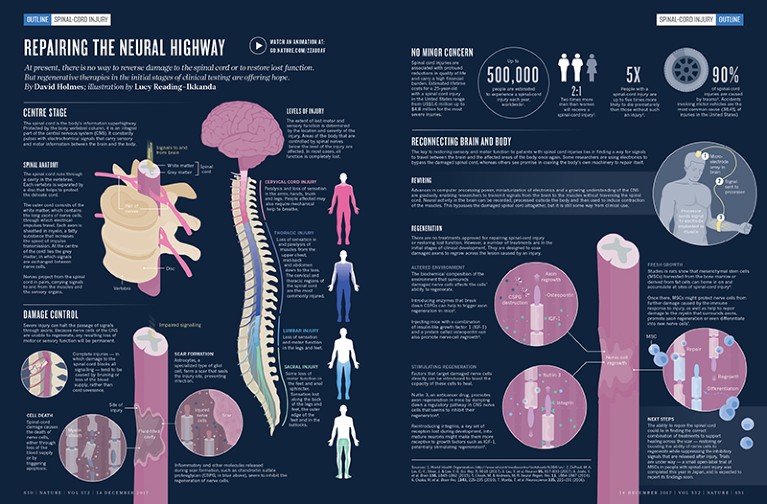
Centre stage
The spinal cord is the body’s information superhighway. Protected by the bony vertebral column, it is an integral part of the central nervous system (CNS). It constantly pulses with electrochemical signals that carry sensory and motor information between the brain and the body.
Spinal anatomy
The spinal cord runs through a cavity in the vertebrae. Each vertebra is separated by a disc that helps to protect the delicate cord.
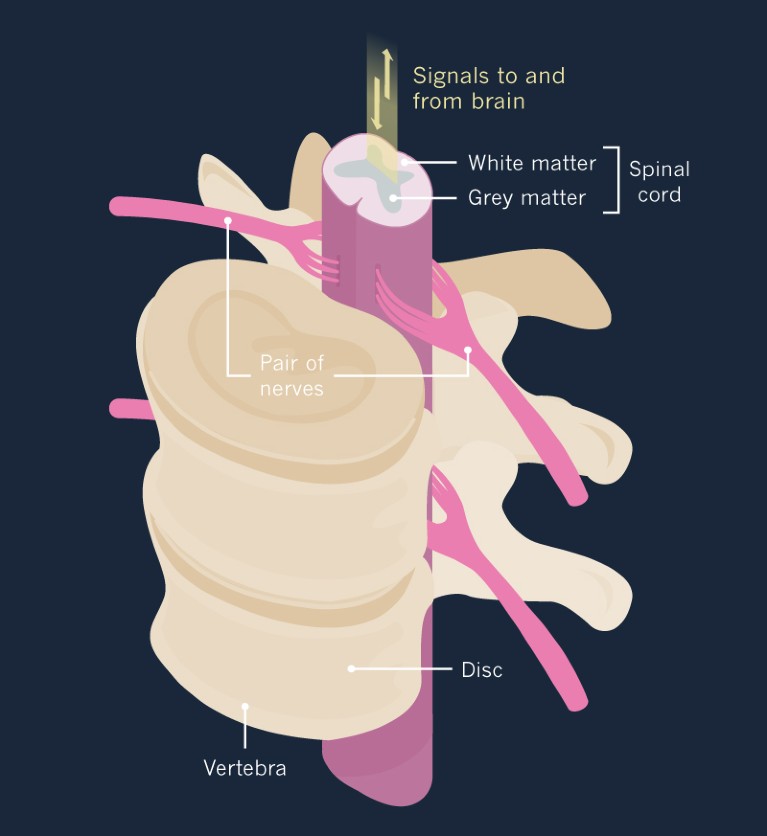
Image: Lucy Reading-Ikkanda
The outer cord consists of the white matter, which contains the long axons of nerve cells, through which electrical impulses travel. Each axon is sheathed in myelin, a fatty substance that increases the speed of impulse transmission. At the centre of the cord lies the grey matter, in which signals are exchanged between nerve cells.
Nerves project from the spinal cord in pairs, carrying signals to and from the muscles and the sensory organs.
Levels of injury
The extent of lost motor and sensory function is determined by the location and severity of the injury. Areas of the body that are controlled by spinal nerves below the level of the injury are affected. In most cases, all function is completely lost.
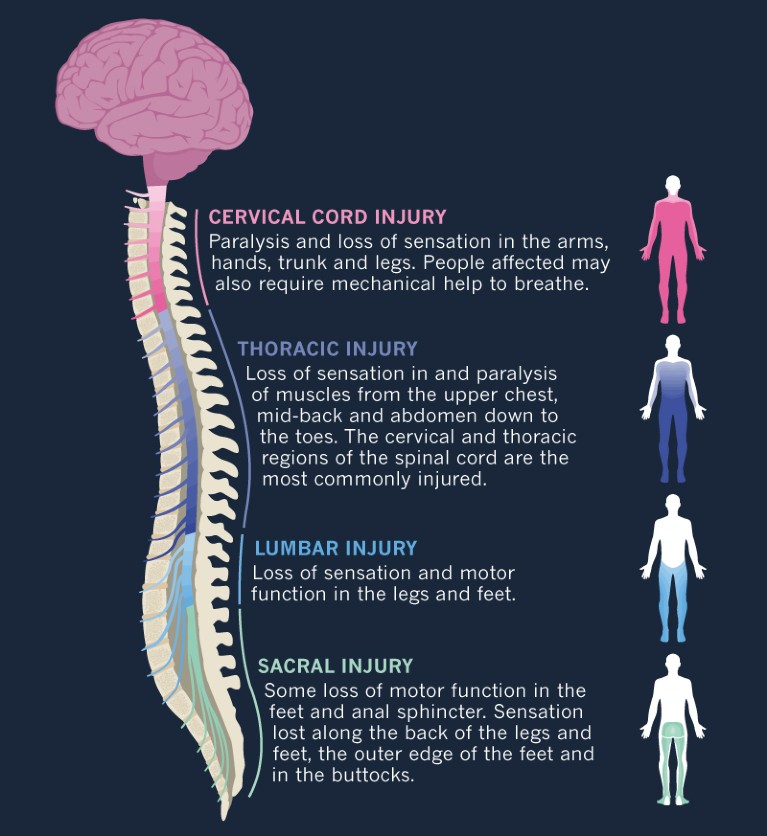
Image: Lucy Reading-Ikkanda
Damage control
Severe injury can halt the passage of signals through axons. Because nerve cells of the CNS are unable to regenerate, any resulting loss of motor or sensory function will be permanent.
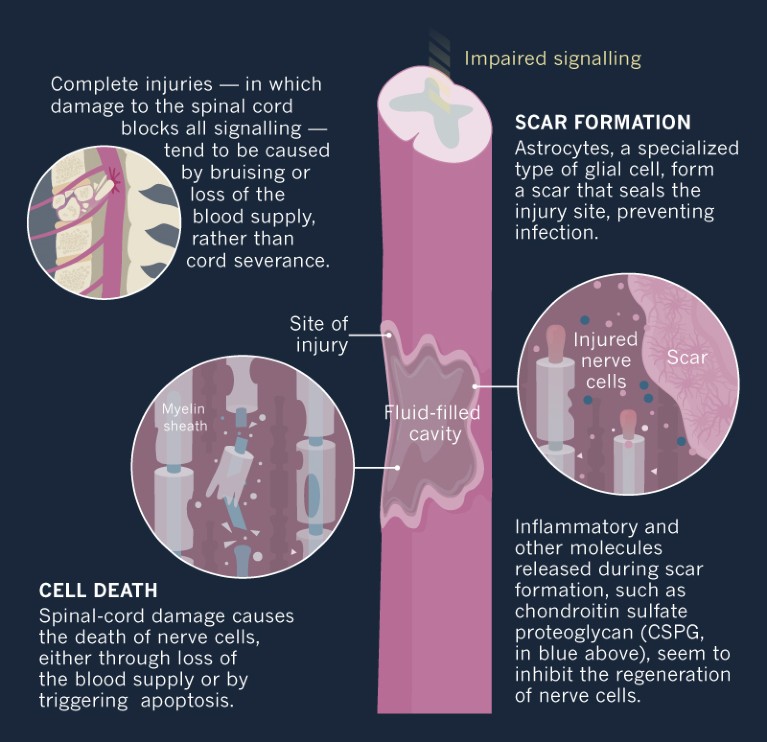
Image: Lucy Reading-Ikkanda
No minor concern
Spinal cord injuries are associated with profound reductions in quality of life and carry a high financial burden. Estimated lifetime costs for a 25-year-old with a spinal cord injury in the United States range from US$1.6 million up to $4.8 million for the most severe injuries.
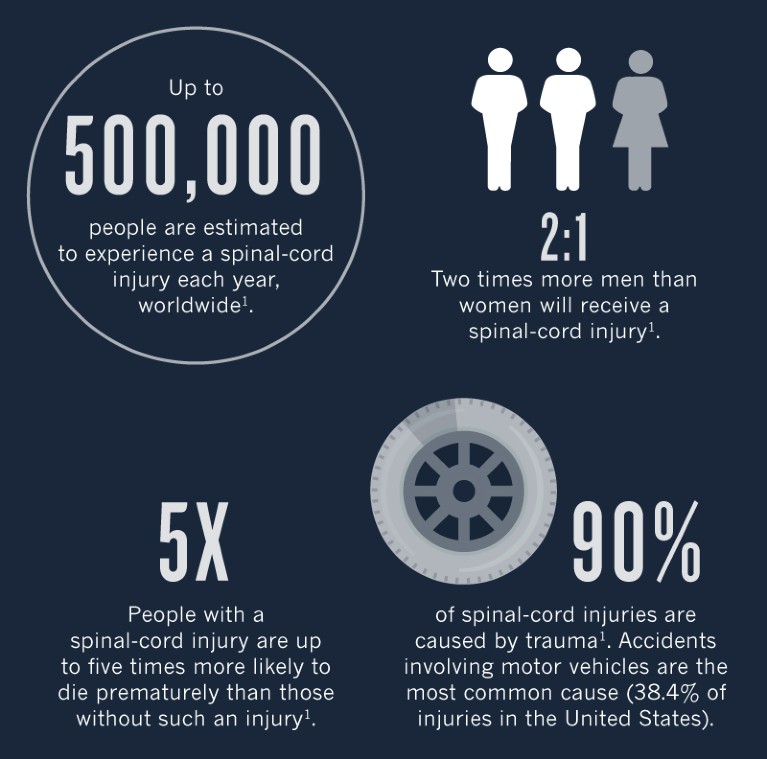
Image: Lucy Reading-Ikkanda
Reconnecting brain and body
The key to restoring sensory and motor function to patients with spinal cord injuries lies in finding a way for signals to travel between the brain and the affected areas of the body once again. Some researchers are using electronics to bypass the damaged spinal cord, whereas others see promise in coaxing the body’s own machinery to repair itself.
Rewiring
Advances in computer processing power, miniaturization of electronics and a growing understanding of the CNS are gradually enabling researchers to transmit signals from the brain to the muscles without traversing the spinal cord. Neural activity in the brain can be recorded, processed outside the body and then used to induce contraction of the muscles. This bypasses the damaged spinal cord altogether, but it is still some way from clinical use.
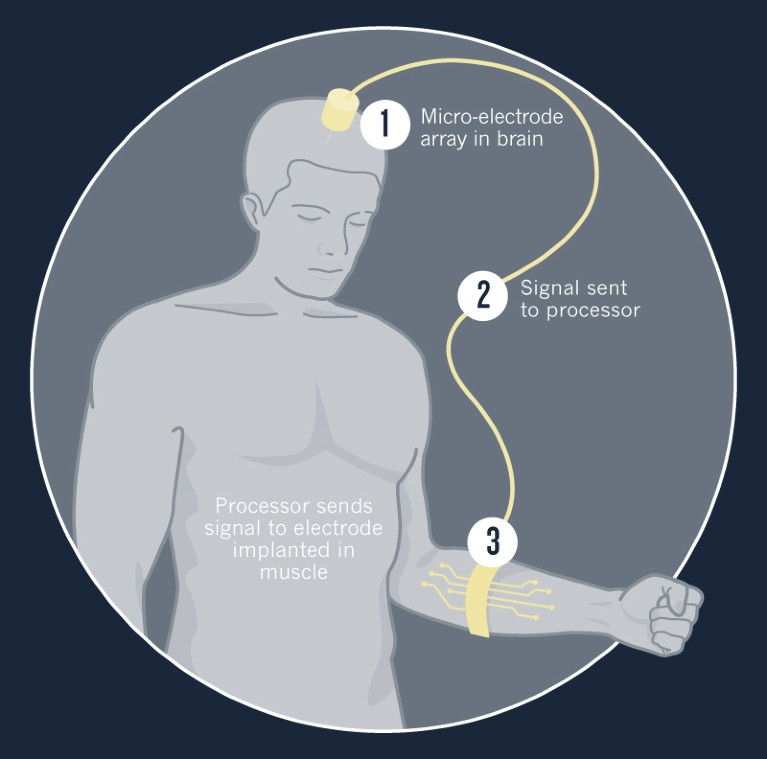
Image: Lucy Reading-Ikkanda
Regeneration
There are no treatments approved for repairing spinal-cord injury or restoring lost function. However, a number of treatments are in the initial stages of clinical development. They are designed to coax damaged axons to regrow across the lesion caused by an injury.
Altered environment
The biochemical composition of the environment that surrounds damaged nerve cells affects the cells’ ability to regenerate.
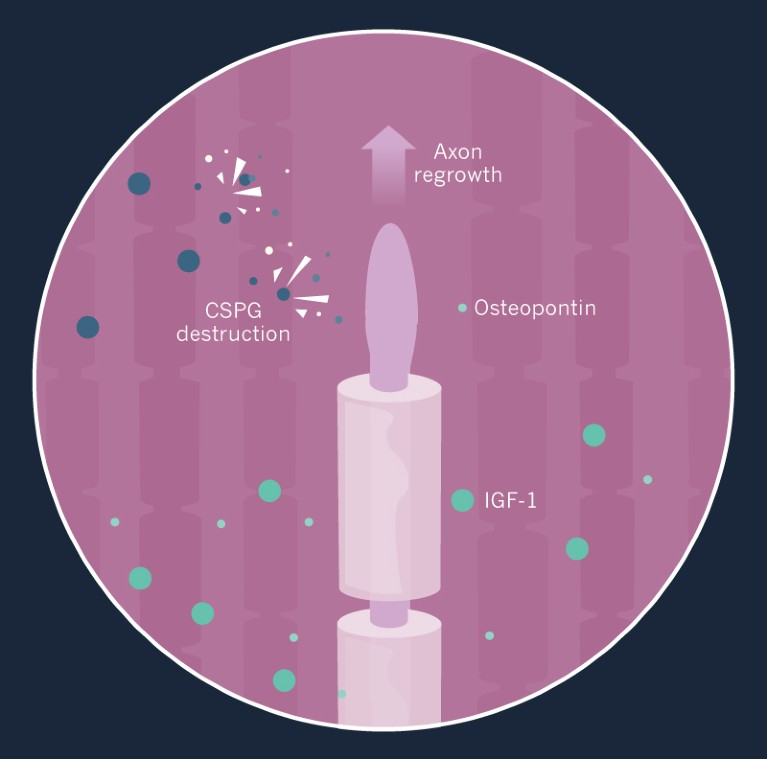
Image: Lucy Reading-Ikkanda
Introducing enzymes that break down CSPGs can help to trigger axon regeneration in mice2.
Injecting mice with a combination of insulin-like growth factor 1 (IGF-1) and a protein called osteopontin can also promote nerve-cell regrowth3.
Stimulating regeneration
Factors that target damaged nerve cells directly can be introduced to boost the capacity of these cells to heal.
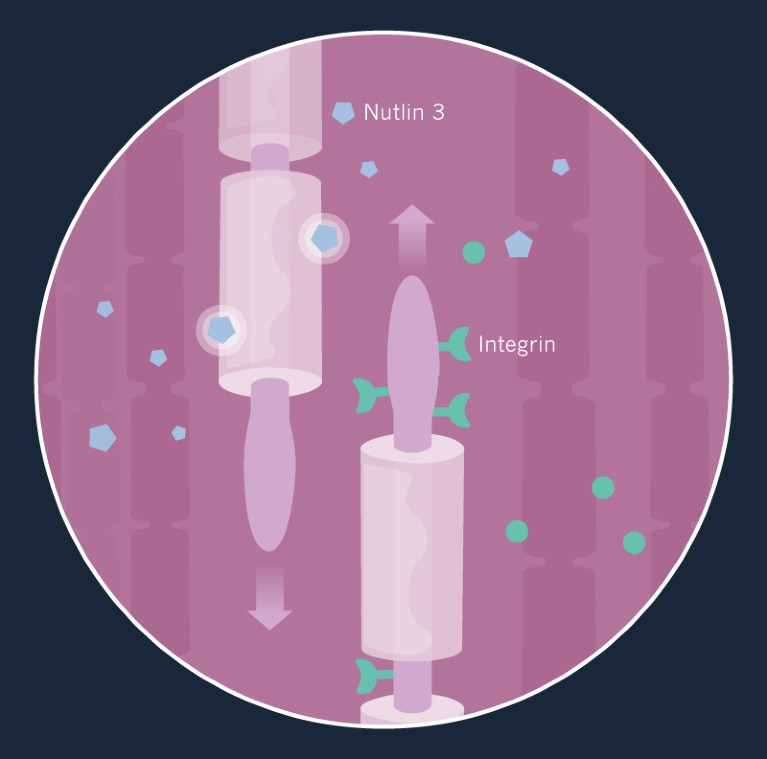
Image: Lucy Reading-Ikkanda
Nutlin 3, an anticancer drug, promotes axon regeneration in mice by damping down a regulatory pathway in CNS nerve cells that seems to inhibit their regeneration4.
Reintroducing integrins, a key set of receptors lost during development, into mature neurons might make them more receptive to growth factors such as IGF-1, potentially stimulating regeneration5.
Fresh growth
Studies in rats show that mesenchymal stem cells (MSCs) harvested from the bone marrow or derived from fat cells can home in on and accumulate at sites of spinal-cord injury6.
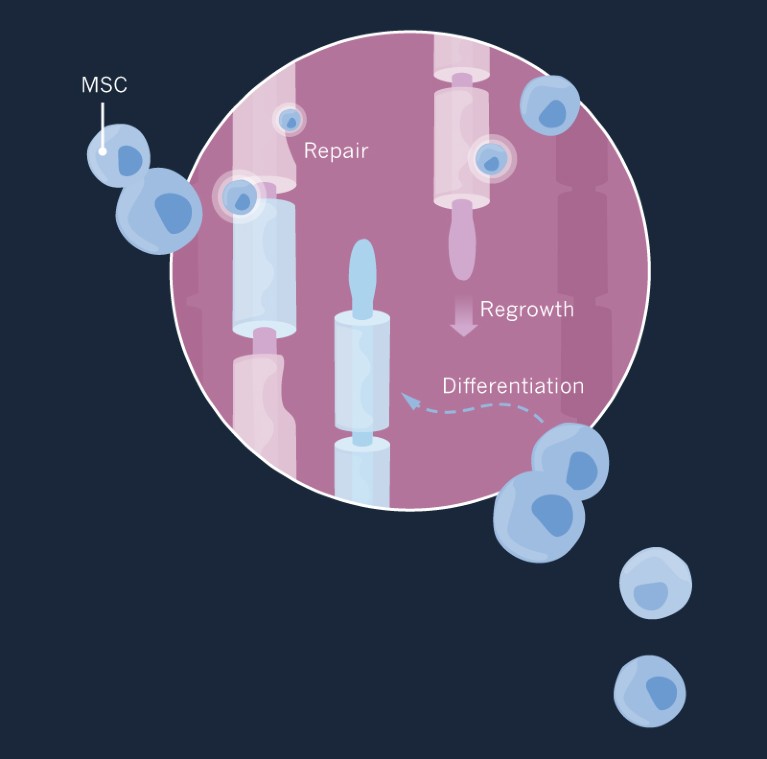
Image: Lucy Reading-Ikkanda
Once there, MSCs might protect nerve cells from further damage caused by the immune response to injury, as well as help to repair damage to the myelin that surrounds axons, promote axon regeneration or even differentiate into new nerve cells7.
Next steps
The ability to repair the spinal cord could lie in finding the correct combination of treatments to support healing across the scar — restoring or boosting the ability of nerve cells to regenerate while suppressing the inhibitory signals that are released after injury. Trials are under way — a small open-label trial of MSCs in people with spinal-cord injury was completed this year in Japan, and is expected to report its findings soon.

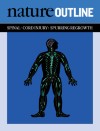 Nature Outline: Spinal-cord injury
Nature Outline: Spinal-cord injury
 Spinal-cord injury: spurring regrowth
Spinal-cord injury: spurring regrowth







